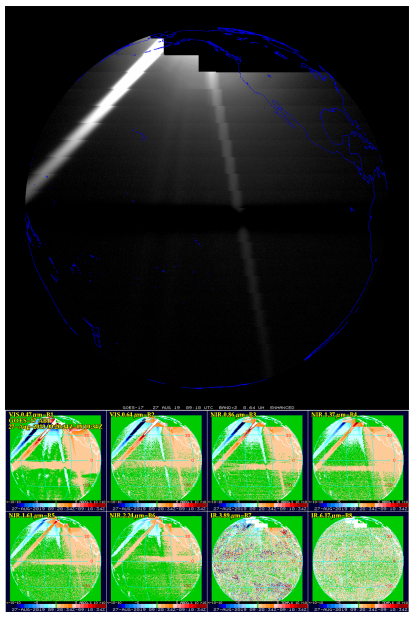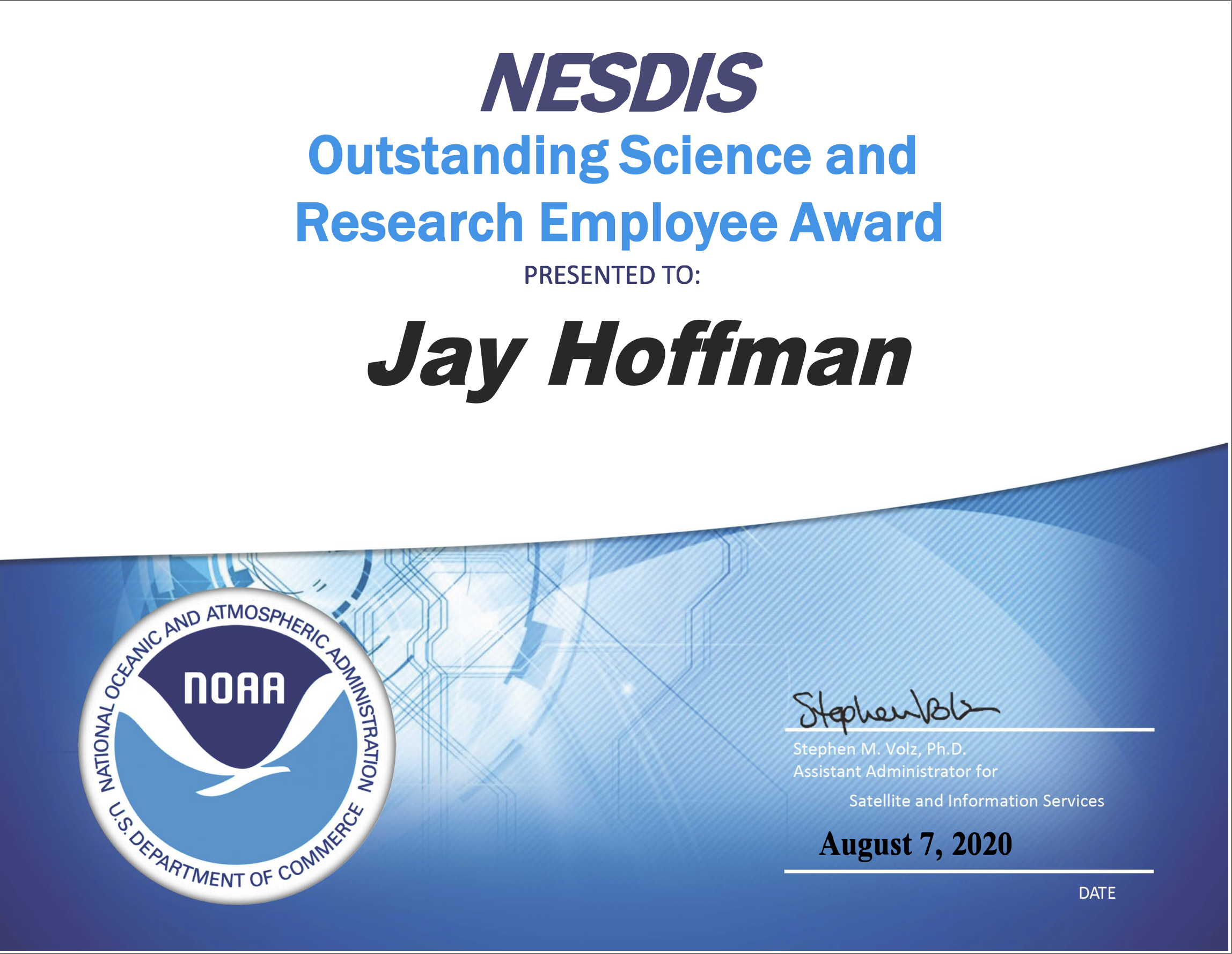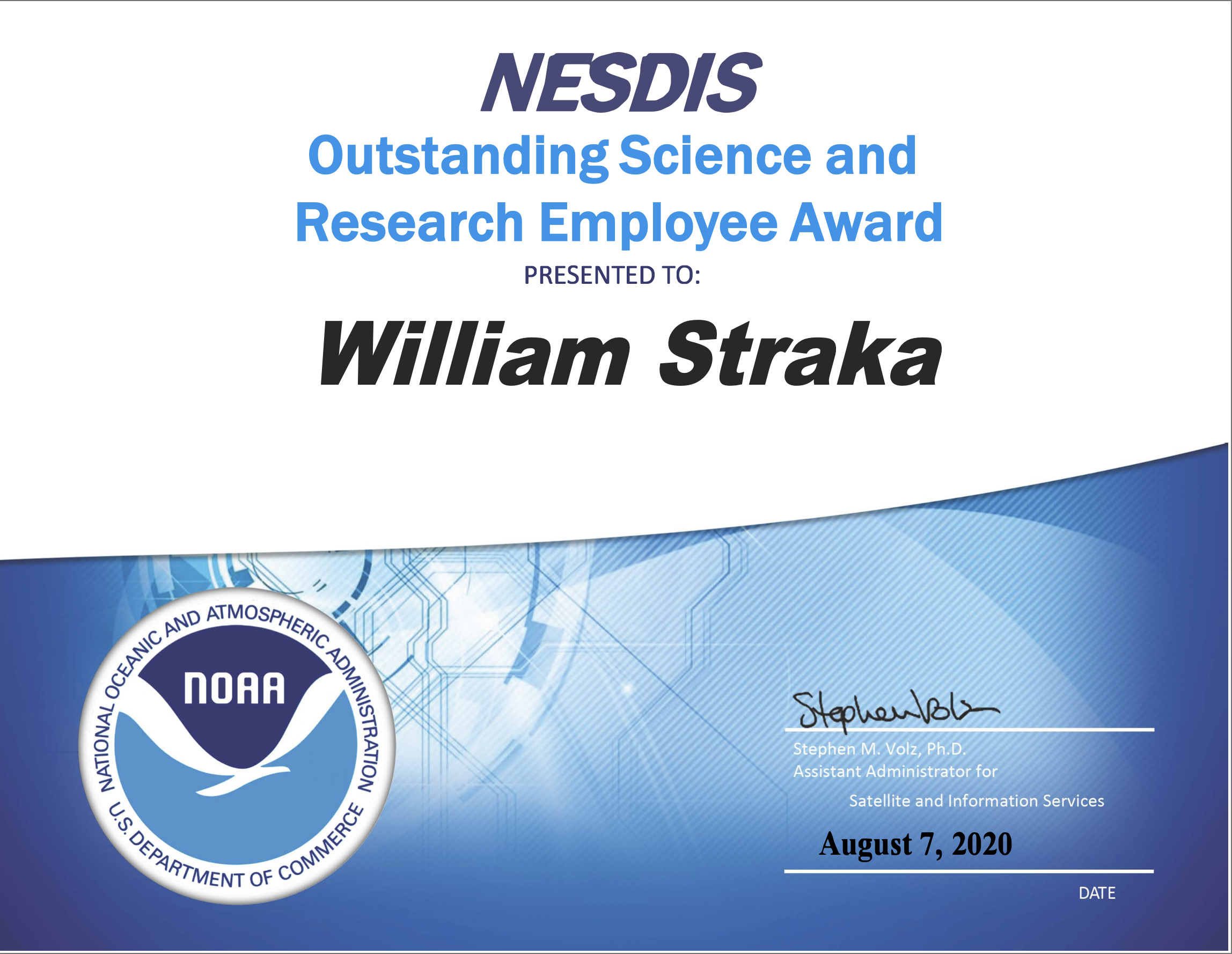
[ Archive ]

 |
CIMSS-NOAA Weekly Report [ Archive ] |
 |
CIMSS AND ASPB WEEKLY HIGHLIGHTS FOR THE WEEK ENDING SEPTEMBER 4, 2020
PRODUCTS AND APPLICATIONS:
CIMSS and JPSS support for response to Hurricane Laura: The NOAA LEO/GEO (low Earth orbit/geostationary Earth orbit) Flood product developed by George Mason University (GMU) is routinely produced and distributed to agencies across the US and world by the Cooperative Institute for Meteorological Satellite Studies (CIMSS). FEMA routinely pulls the flood products from CIMSS to assist in analysis of where flooding occurs, both as a validation of their own flood models as well as to do analysis of impacted structures. In addition, GMU was able to pull VIIRS data from the CIMSS Direct Broadcast antenna to rapidly produce a 30m downscaled product for FEMA the day Hurricane Laura made landfall on 27 August. This product was utilized by FEMA in their initial damage analysis and highlighted in the daily Geospatial coordiantion calls during Hurricane Laura, as seen in the figure. The team was also recognized for their contributions by NESDIS for their efforts on the LEO/GEO Flood product as well as the LEO/GEO Flood website at CIMSS (https://www.ssec.wisc.edu/flood-map-demo/) with the NESDIS Outstanding Science and Research Employee award (see below). (W. Straka III, CIMSS; J Hoffman, CIMSS; M. Golberg, NOAA/NESDIS; B. Sjoberg, NOAA/NESDIS; S Li, GMU)
AWARDS AND RECOGNITION:
PUBLICATIONS:
Manuscript on ABI Imagery Artifacts published: A manuscript titled "Geostationary Operational Environmental Satellite-R series advanced baseline imagery artifacts" was published in the Journal of Applied Remote Sensing (JARS) (https://bit.ly/320heVf) as part of a special issue on GOES-R calibration. The authors are Mathew M. Gunshor, Timothy J. Schmit, David Pogorzala, Scott Lindstrom, and James P. Nelson III. The work was funded through the cooperative agreement with NOAA via the GOES-R Algorithm Working Group (AWG) and Calibration Working Group (CWG). (M. Gunshor, CIMSS, 608-263-1146, T. Schmit, E/RA2, 608-263-0291, tim.j.schmit@noaa.gov, S. Lindstrom, CIMSS, J. Nelson, CIMSS)
 (Click image to enlarge)
(Click image to enlarge)
Figure: Stray light seen in GOES-17 on August 27, 2019, at 09:10 UTC. The top panel shows band 2 (0.64um) with bright object avoidance (also known as the "Cookie Monster" effect) at the top of the image and various bright streaks through the image. The lower eight panels show bands 1 to 8 time difference imagery where the 09:10 UTC image has been subtracted from the 09:20 UTC image.
WORKSHOPS, CONFERENCES, AND MEETINGS:
TRAINING AND EDUCATION:
MEDIA AND OUTREACH:
SSEC and CIMSS Scientists in the News: Scientists at the University of Wisconsin-Madison (UW) Space Science and Engineering Center (SSEC) and the Cooperative Institute for Meteorological Satellite Studies (CIMSS) provide expert commentary, interviews, and imagery to news media and participate in events to promote science. 1) NOAA NCEI scientist James Kossin was interviewed at the end of August by The News Tribune, The Washington Post, The New York Times, and Scientific American, among others, about this year's active hurricane season. Read more: https://go.wisc.edu/04ba99, https://go.wisc.edu/b4s0yh, https://go.wisc.edu/71007f, https://go.wisc.edu/51hmjn. 2) CIMSS scientists Jay Hoffman and William Straka III received the NESDIS Outstanding Science and Research Employee Award for their work in producing a satellite-based, flood detection map, or product, from daytime Suomi-NPP/VIIRS data. Their contributions provided “critical operational capabilities to Alaska forecasters during Spring Break-up. These flood products are now available internationally through GEONETCast-Americas and GEOGloWS.” They join CIMSS scientist Tony Wimmers in receiving this award (reported Aug. 21). 3) CIMSS Satellite Blog contributors Scott Lindstrom, Scott Bachmeier, and John Cintineo published posts on "CMORPH Precipitation Data available" (Sept. 3), "Wildfires in Montana" (Sept. 2), "Using GOES ABI and deep learning to nowcast lightning" (Sept. 2), and "Severe thunderstorms in South Dakota" (Aug. 30). Read more: https://cimss.ssec.wisc.edu/satellite-blog/. (J. Phillips, SSEC, 608-262-8164, J. Kossin, NCEI, 608-265-5356, J. Hoffman, CIMSS, W. Straka III, S. Lindstrom, CIMSS, S. Bachmeier, CIMSS, 608-263-3958, J. Cintineo, CIMSS)
 (Click image to enlarge)
(Click image to enlarge)
Figure: Hoffman received the NESDIS Outstanding Science and Research Employee Award by colleagues in the Joint Polar Satellite System (JPSS) Office.
 (Click image to enlarge)
(Click image to enlarge)
Figure: Straka was nominated for the NESDIS Outstanding Science and Research Employee Award by colleagues in the Joint Polar Satellite System (JPSS) Office.
OTHER:
| Archived Weeklies Page | Submit a report item |